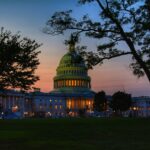How Free Speech Got Its Start in America
The following is an excerpt from Speech First’s “A Brief History of Free Speech in America.”
Words are powerful – which is why throughout history, kings, tyrants and governments have imprisoned, tortured, and even killed people to maintain control over ideas. Only through the free “clash of ideas” do societies pursue truth that can enable human flourishing.
Even before there was an independent “America” to speak of, our nation built a relationship with free speech. The Zenger case (1735) abolished seditious libel, which restricted the British government from infringing on press freedom. Colonists leveraged these newfound rights to utilize words as a check on authority. These principles set the stage for the U.S. Constitution and, later, the First Amendment in the U.S. Bill of Rights (1791) which enshrined freedom of speech in the forefront of the American consciousness and legal foundations.
Of course, the story doesn’t end there; over the next two centuries or so came challenges to define this freedom: sedition acts, questions on when free speech would (and wouldn’t) be protected, protests, flag burnings, and countless court rulings. These challenges to the First Amendment and what form its protections should take, continue to the modern day. And while the notion of free speech isn’t always correctly understood or interpreted, when properly exercised and protected, it has an unparalleled ability to effectuate positive change and elevate the nation.
1787-1788: Federalist Papers written and published.
During the Founding Fathers’ debates over how best to structure the new nation’s government, the Federalist Papers were one outlet where potential policies were articulated and defended.
Federalist 84, penned by Alexander Hamilton, opposed what would later become the U.S. Bill of Rights. Hamilton felt the addition of a Bill of Rights was unnecessary, as it would give the people the false impression that the ONLY rights they held were the ones specifically listed in the document. Eventually, the Bill of Rights was created – but as a compromise with Hamilton, the 10th Amendment specifically notes that all rights not listed remain in the hands of the public.
1791: The U.S. Bill of Rights is published, establishing the First Amendment and other freedoms for all Americans.
The Bill of Rights covers the first 10 Amendments to the Constitution. At the very beginning of the document, in 45 simple words, it established five fundamental freedoms for all Americans:
freedom of religion; freedom of speech; freedom of the press; the right to assemble; and the right to petition the government for a redress of grievances. Other rights specifically enumerated in the Bill of Rights include the right to due process, the right to a speedy trial, and the right to bear arms.
1798: Alien & Sedition Acts passed, limiting freedom of speech and the press.
The Alien and Sedition Acts were a series of four laws passed by the Federalist Congress and signed into law by President John Adams. While many believed war with France imminent, the
Federalists accused the Jeffersonians of siding with France against the U.S. government. These laws limited freedom of speech and of the press and included new powers to deport foreigners, restrict their activities, and make it harder for them to vote.
1800-1801: President Thomas Jefferson, opposed to the Acts, allows the Sedition Act and the Alien Friends Act to expire.
The Sedition Act restricted any speech deemed critical of the federal government, and Jeffersonian newspaper owners who disagreed with the government were often targeted for criminal prosecution. Thomas Jefferson defeated John Adams in the 1800 Presidential election; at the time, it was widely believed that opposition to the Acts helped propel the Jeffersonians to victory. The Acts were allowed to expire in 1800 (Sedition Act) and 1801 (Alien Friends Act).




